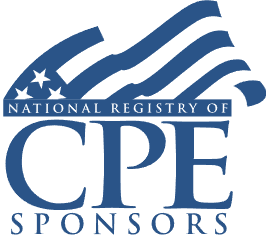Sharpening Single Audit Practices and Avoiding Audit Deficiencies
TBD

Course Details
- smart_display Format
On-Demand
- signal_cellular_alt Difficulty Level
Intermediate
- work Practice Area
Accounting
- event Date
Thursday, May 23, 2019
- schedule Time
1:00 PM E.T.
- timer Program Length
110 minutes
-
BARBRI is a NASBA CPE sponsor and this 110-minute webinar is accredited for 2.0 CPE credits.
-
Live Online
On Demand
This course will take a fresh look at Single Audit requirements under Uniform Guidance. The panel will review best practices for compliance with Uniform Guidance and discuss strategies to avoid the most common audit deficiencies.
Description
Considering the release of the updated 2018 Yellow Book (effective for financial audits on or after June 30, 2020, and not before), the related Green Book and the implementation of Uniform Guidance, auditors must keep up with a plethora of ever-changing guidelines to maintain proficiency. Preparing the best Single Audit may be an aspiration but having a system of quality controls is a mandate (Statements on Quality Control Standards No. 8 issued by the Auditing Standards Board).
As auditors work through Uniform Guidance for Single Audits and anticipate the results from the required Single Audit Quality Study, they need only to look back a few years to see that even before UG most auditors struggled to meet the voluminous requirements of the multiple authorities. A 2007 federal Single Audit study labeled more than 50% of Single Audits examined as either unacceptable or limited reliability statements. The areas where auditors missed the mark are still relative under the current Single Audit guidelines.
In 2015, an AICPA Peer Review team audit of Single Audits found that audit quality increased significantly relative to the number of audits performed by a firm and an engagement partner, and these results did not vary based on the size of the firm. Quality needs to be addressed by the firm as well as by the auditor. What steps contribute to increased proficiency?
Listen as our panel of experts provides an overview of Uniform Guidance, explains common Single Audit deficiencies, and outlines the steps that firms and auditors can take to produce high-quality Single Audits.
Outline
- Single Audit Guidance refresher
- Continuing problem areas
- Firm best practices
- Auditor best practices
Benefits
The panel will review these and other key issues:
- Complying with current authoritative guidance
- Recognizing common areas of concern in Single Audits
- Implementing firm procedures to facilitate quality audits
- Steps to avoid frequent Single Audit deficiencies
NASBA Details
Learning Objectives
After completing this course, you will be able to:
- Identify best practices for Single Audits
- Recognize areas of auditor concern in Single Audits
- Decide which authoritative guidance is relevant
- Define steps for better audit preparation
- Field of Study: Auditing
- Level of Knowledge: Intermediate
- Advance Preparation: None
- Teaching Method: Seminar/Lecture
- Delivery Method: Group-Internet (via computer)
- Attendance Monitoring Method: Attendance is monitored electronically via a participant's PIN and through a series of attendance verification prompts displayed throughout the program
- Prerequisite: Three years+ business or public firm experience at mid-level within the organization, preparing complex tax forms and schedules; supervisory authority over other preparers/accountants. Specific knowledge and understanding of cost allocation principles; familiarity with government standards for nonprofit organizations receiving federal grant monies

Strafford Publications, Inc. is registered with the National Association of State Boards of Accountancy (NASBA) as a sponsor of continuing professional education on the National Registry of CPE Sponsors. State boards of Accountancy have final authority on the acceptance of individual courses for CPE Credits. Complaints regarding registered sponsons may be submitted to NASBA through its website: www.nasbaregistry.org.
Unlimited access to premium CLE courses:
- Annual access
- Available live and on-demand
- Best for attorneys and legal professionals
Unlimited access to premium CPE courses.:
- Annual access
- Available live and on-demand
- Best for CPAs and tax professionals
Unlimited access to premium CLE, CPE, Professional Skills and Practice-Ready courses.:
- Annual access
- Available live and on-demand
- Best for legal, accounting, and tax professionals
Unlimited access to Professional Skills and Practice-Ready courses:
- Annual access
- Available on-demand
- Best for new attorneys
Related Courses
Recommended Resources
Gain a Competitive Edge Through Efficient CPE Strategies
- Learning & Development
- Business & Professional Skills
- Career Advancement
